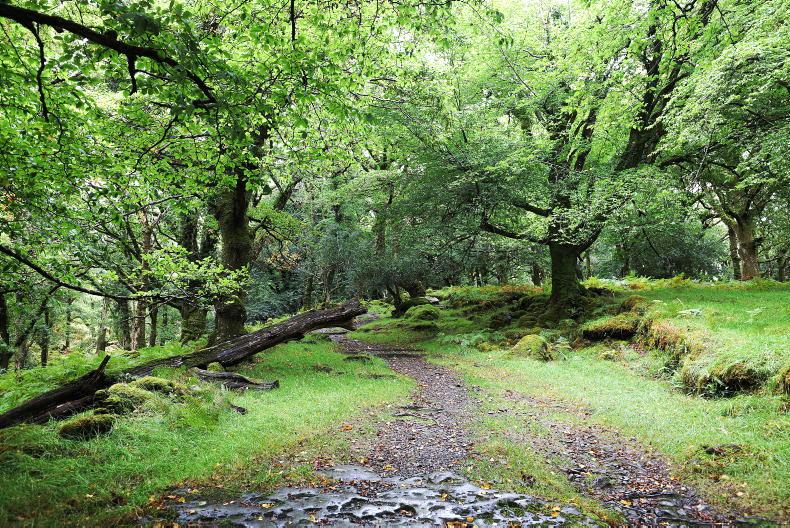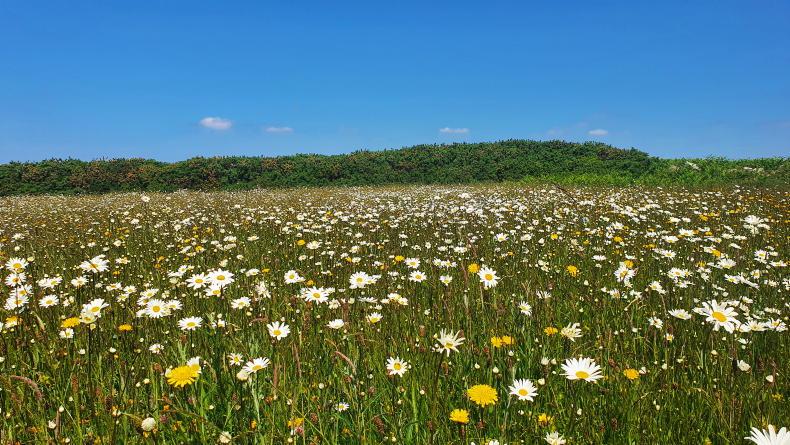In Europe, as elsewhere, nature is shrinking at what scientists warn is an alarming rate. More than 80% of habitats in the EU are in bad or poor condition. Peatlands, grasslands and dunes are worst affected and up to 70% of EU soils are unhealthy. A whole range of species is in decline, including bees, butterflies, fish and amphibians. Lack of progress in meeting existing EU and international biodiversity and habitats policies and targets shows that voluntary commitments by member states are not enough.
In an effort to restore biodiversity loss and nature, the EU has proposed an ambitious Nature Restoration Law. Published in June this year, the legislation is currently being debated in Europe.
Addressing biodiversity loss has strong support from the European Parliament, the EU Council, civic society and environmental NGOs.
Restoring at least 20% of EU land and sea by 2030
The proposed regulation sets an overarching legally binding target for ecosystem restoration of at least 20% of EU land and sea by 2030 and all ecosystems by 2050, in need of restoration. It also sets specific targets for multiple ecosystems, habitats and groups of species that should be restored by 2030, 2040 and 2050. Member states are required to develop national restoration plans, taking account of national circumstances.
Law targets quality and quantity of habitats
Legally binding restoration targets are proposed for habitats covered under the EU Habitats Directive and EU Nature Directive, which target conservation of threatened animal and plant species. These include wetlands, grasslands and other pastoral habitats, rivers, lakes and riparian habitats, forests, heath and scrub, rocky and dune habitats.
The Nature Restoration Law requires member states to improve both the quality and quantity of these habitats. Regarding quality, member states must undertake restoration measures to improve the condition and connectivity of these habitats on 30% of the area which is currently not in good condition by 2030, 60% by 2040 and at least 90% by 2050.
Regarding quantity, member states must put in place restoration measures to re-establish these habitats on 30% of the additional area needed to ensure their long-term viability by 2030, 60% by 2040 and at least 100% by 2050. As ecosystems are inter-related, actions addressing one target will likely yield results for others.
The proposed law builds upon existing EU nature and environment laws, focusing on all habitats and not just those protected under Birds and Habitats Directives or Natura 2000.
However, it differs to earlier legislation in that it is a regulation not a directive. Therefore, once enacted by the EU, it becomes national law in all member states enforceable through the national courts. It also provides deadlines for restoration, unlike earlier legislation.
Targets to restore nature will drive extensification
Achieving the restoration targets for already threatened habitats would require a significant ask of farmers. However, outside of habitats already identified for conservation, this law requires the restoration of agricultural ecosystems, pollinator populations, forest ecosystems and connectivity of rivers and floodplains. All of these will have implications for farmers.
Key legislation such as the existing water framework directive and the planned sustainable use of pesticides directive will support the delivery of nature restoration targets.
The proposed targets would almost certainly result in the delivery of the Farm to Fork objectives of increased organic production (+25%), reduced fertiliser use (-20%) and reduced livestock. Essentially, it would result in a significant drive towards extensification of food production.
Restoration of agricultural
ecosystems
Restoration of agricultural ecosystems is a specific target within the proposed law. There is no common method for assessing the condition of agricultural ecosystems that enables setting restoration targets for these ecosystems.
Therefore, the proposed law imposes a general obligation to improve biodiversity measured between entry into force and 2030, and every three years thereafter until satisfactory levels are reached.
Grassland butterfly index, stock of organic carbon in cropland mineral soils and the share of land with high-diversity landscape features (e.g buffer strips, hedges, stonewalls etc) will be monitored. Specific targets are detailed for recovery of farmland birds as they are a recognised key indicator of the health of agricultural ecosystems.
Member states are also required to put in place restoration measures for organic soils in agriculture use consisting of drained peatlands.
Restoration of peat extraction sites may be included and counted towards achieving the targets for agriculture, which are:
30% of such areas by 2030, of which at least one-quarter is rewetted.50% of such areas by 2040, of which at least half shall be rewetted.70% of such areas by 2040, of which at least half shall be rewetted.Rewetting drained peatlands other than peat extraction and agricultural use (e.g forestry) may also be included, but only up to a maximum of 20% of the above targets.
There are no compelling arguments against restoring nature and biodiversity and few, if any, farmers would challenge why this is necessary. However, the scale of ambition of the targets within the timescale proposed will be a concern to farmers.
Within the proposed law, the obligation to meet targets is on member states and not individual farmers. But delivery will require farmer action that must be financially motivated and rewarded.
Who funds nature restoration, with what funding and for how long will be a central debate. Upfront costs and incentives are one thing, but funding to sustain environmental investment and returns into the future is key.
Arguments that the market will in time pay for environmental sustainability are unlikely to motivate farmers, particularly those reliant on markets outside of the EU. Recent concerns about the Burren Life programme, one of the premier agri environmental schemes in Europe, question whether governments will commit to paying for nature restoration and conservation over the long-term.
The EU must determine its long-term funding strategy for nature restoration and maintenance into the future before this legislation can be agreed and enacted in any form.
In Europe, as elsewhere, nature is shrinking at what scientists warn is an alarming rate. More than 80% of habitats in the EU are in bad or poor condition. Peatlands, grasslands and dunes are worst affected and up to 70% of EU soils are unhealthy. A whole range of species is in decline, including bees, butterflies, fish and amphibians. Lack of progress in meeting existing EU and international biodiversity and habitats policies and targets shows that voluntary commitments by member states are not enough.
In an effort to restore biodiversity loss and nature, the EU has proposed an ambitious Nature Restoration Law. Published in June this year, the legislation is currently being debated in Europe.
Addressing biodiversity loss has strong support from the European Parliament, the EU Council, civic society and environmental NGOs.
Restoring at least 20% of EU land and sea by 2030
The proposed regulation sets an overarching legally binding target for ecosystem restoration of at least 20% of EU land and sea by 2030 and all ecosystems by 2050, in need of restoration. It also sets specific targets for multiple ecosystems, habitats and groups of species that should be restored by 2030, 2040 and 2050. Member states are required to develop national restoration plans, taking account of national circumstances.
Law targets quality and quantity of habitats
Legally binding restoration targets are proposed for habitats covered under the EU Habitats Directive and EU Nature Directive, which target conservation of threatened animal and plant species. These include wetlands, grasslands and other pastoral habitats, rivers, lakes and riparian habitats, forests, heath and scrub, rocky and dune habitats.
The Nature Restoration Law requires member states to improve both the quality and quantity of these habitats. Regarding quality, member states must undertake restoration measures to improve the condition and connectivity of these habitats on 30% of the area which is currently not in good condition by 2030, 60% by 2040 and at least 90% by 2050.
Regarding quantity, member states must put in place restoration measures to re-establish these habitats on 30% of the additional area needed to ensure their long-term viability by 2030, 60% by 2040 and at least 100% by 2050. As ecosystems are inter-related, actions addressing one target will likely yield results for others.
The proposed law builds upon existing EU nature and environment laws, focusing on all habitats and not just those protected under Birds and Habitats Directives or Natura 2000.
However, it differs to earlier legislation in that it is a regulation not a directive. Therefore, once enacted by the EU, it becomes national law in all member states enforceable through the national courts. It also provides deadlines for restoration, unlike earlier legislation.
Targets to restore nature will drive extensification
Achieving the restoration targets for already threatened habitats would require a significant ask of farmers. However, outside of habitats already identified for conservation, this law requires the restoration of agricultural ecosystems, pollinator populations, forest ecosystems and connectivity of rivers and floodplains. All of these will have implications for farmers.
Key legislation such as the existing water framework directive and the planned sustainable use of pesticides directive will support the delivery of nature restoration targets.
The proposed targets would almost certainly result in the delivery of the Farm to Fork objectives of increased organic production (+25%), reduced fertiliser use (-20%) and reduced livestock. Essentially, it would result in a significant drive towards extensification of food production.
Restoration of agricultural
ecosystems
Restoration of agricultural ecosystems is a specific target within the proposed law. There is no common method for assessing the condition of agricultural ecosystems that enables setting restoration targets for these ecosystems.
Therefore, the proposed law imposes a general obligation to improve biodiversity measured between entry into force and 2030, and every three years thereafter until satisfactory levels are reached.
Grassland butterfly index, stock of organic carbon in cropland mineral soils and the share of land with high-diversity landscape features (e.g buffer strips, hedges, stonewalls etc) will be monitored. Specific targets are detailed for recovery of farmland birds as they are a recognised key indicator of the health of agricultural ecosystems.
Member states are also required to put in place restoration measures for organic soils in agriculture use consisting of drained peatlands.
Restoration of peat extraction sites may be included and counted towards achieving the targets for agriculture, which are:
30% of such areas by 2030, of which at least one-quarter is rewetted.50% of such areas by 2040, of which at least half shall be rewetted.70% of such areas by 2040, of which at least half shall be rewetted.Rewetting drained peatlands other than peat extraction and agricultural use (e.g forestry) may also be included, but only up to a maximum of 20% of the above targets.
There are no compelling arguments against restoring nature and biodiversity and few, if any, farmers would challenge why this is necessary. However, the scale of ambition of the targets within the timescale proposed will be a concern to farmers.
Within the proposed law, the obligation to meet targets is on member states and not individual farmers. But delivery will require farmer action that must be financially motivated and rewarded.
Who funds nature restoration, with what funding and for how long will be a central debate. Upfront costs and incentives are one thing, but funding to sustain environmental investment and returns into the future is key.
Arguments that the market will in time pay for environmental sustainability are unlikely to motivate farmers, particularly those reliant on markets outside of the EU. Recent concerns about the Burren Life programme, one of the premier agri environmental schemes in Europe, question whether governments will commit to paying for nature restoration and conservation over the long-term.
The EU must determine its long-term funding strategy for nature restoration and maintenance into the future before this legislation can be agreed and enacted in any form.









SHARING OPTIONS